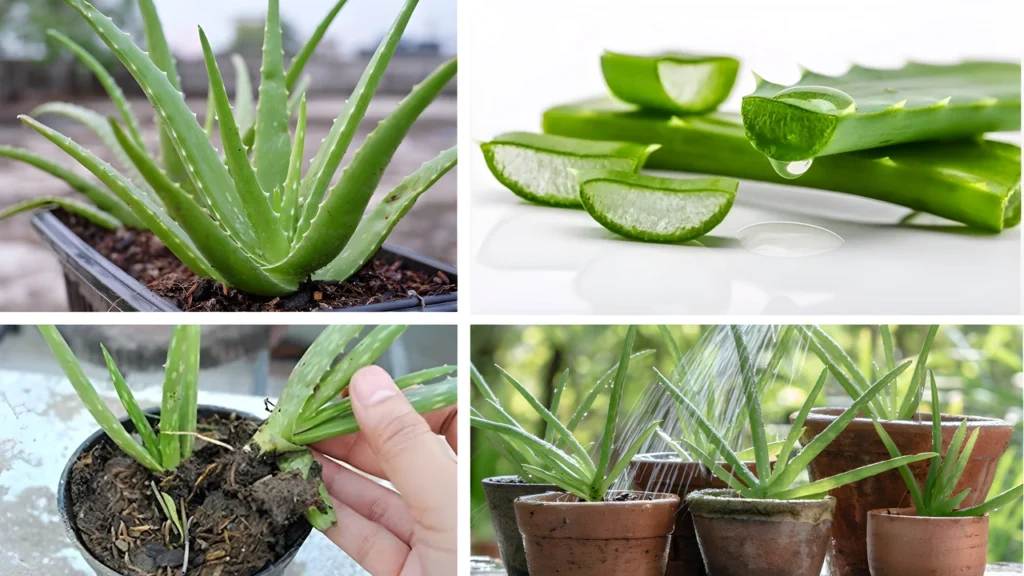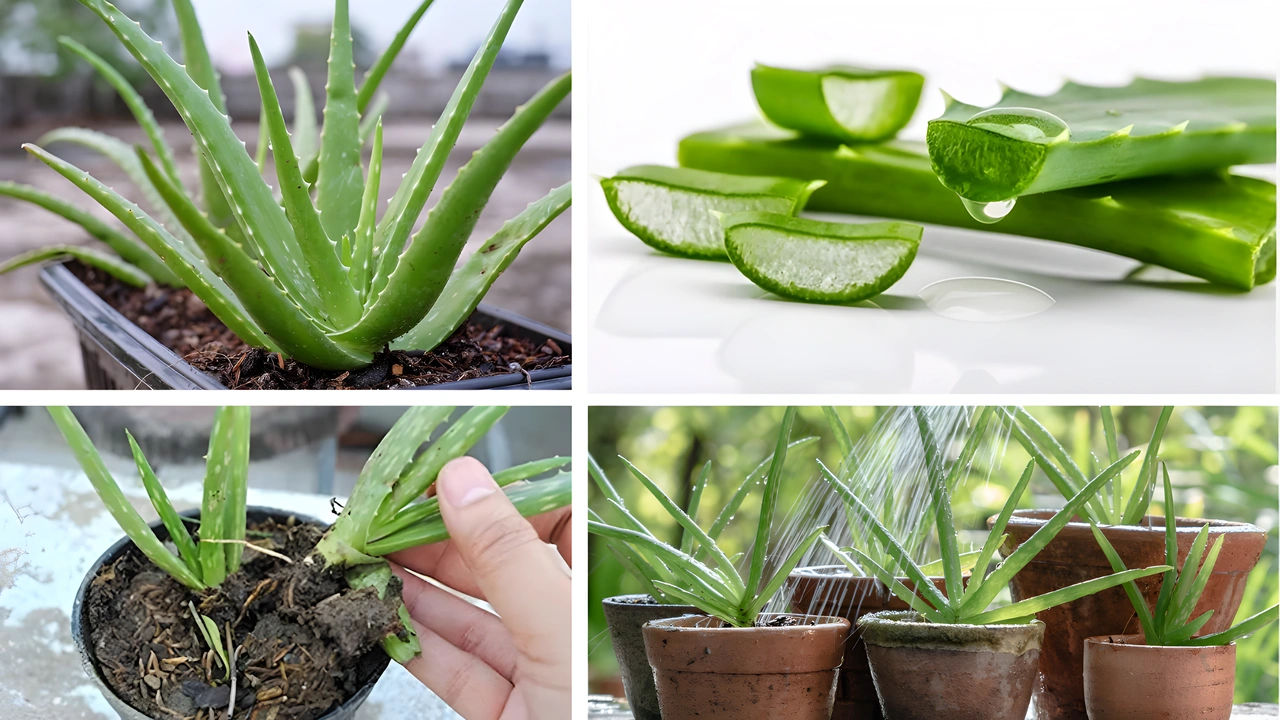Join on WhatsApp
Get the latest updates directly on WhatsApp – motivation, news & more!
Aloe Vera is one of the most beloved and beneficial houseplants, known for both its healing properties and its effortless charm. Learning how to grow and care for Aloe Vera at home allows you to cultivate a thriving plant that not only beautifies your living space but also provides natural remedies for burns, skin care, and more. Whether you’re a beginner or a seasoned plant lover, growing Aloe Vera successfully requires understanding its specific needs—from light and watering to repotting and harvesting. In this complete guide, you’ll discover everything you need to know to grow and care for Aloe Vera at home the right way.

1. Choosing the Right Variety to Grow and Care for Aloe Vera at Home
Before you can properly grow and care for Aloe Vera at home, it’s important to choose the right variety. While the most common type is Aloe barbadensis miller, which is prized for its medicinal gel, there are over 500 species of Aloe—some ornamental and others medicinal.
For home growing, focus on a variety known for rich gel content and ease of care. Make sure to get your Aloe Vera from a reputable nursery or garden center to ensure it’s suitable for indoor or patio growth. This simple choice will make it much easier to grow and care for Aloe Vera at home successfully.
2. The Ideal Soil and Pot Setup to Grow and Care for Aloe Vera at Home
To grow and care for Aloe Vera at home, you need the right soil and pot. Aloe Vera thrives in sandy, well-draining soil—ideally a cactus or succulent mix. Avoid regular potting soil as it retains too much moisture, which can lead to root rot.
Use a pot with drainage holes, preferably made of terracotta or clay. These materials allow for better moisture control and help prevent overwatering. Drainage is a non-negotiable part of learning how to grow and care for Aloe Vera at home because too much water is the number one killer of Aloe plants.
3. Light and Temperature Requirements to Grow and Care for Aloe Vera at Home
A critical part of knowing how to grow and care for Aloe Vera at home is understanding its light and temperature needs. Aloe Vera loves sunlight—ideally six to eight hours a day. If you’re growing it indoors, place it near a south- or west-facing window. Outdoors, make sure it’s not in full shade.
As for temperature, Aloe Vera prefers warmth and should be protected from temperatures below 50°F (10°C). If you live in a cooler climate, bring the plant indoors during the winter. These environmental factors are essential to grow and care for Aloe Vera at home effectively.
4. Watering Techniques to Grow and Care for Aloe Vera at Home
Understanding how to water properly is vital if you want to grow and care for Aloe Vera at home. Aloe is a succulent and stores water in its thick leaves, so it doesn’t need frequent watering. Let the soil dry out completely between waterings.
A general rule is to water every 2–3 weeks, less in winter. Overwatering is a common mistake that causes root rot. To avoid this, water thoroughly but infrequently, and always make sure excess water drains out. Mastering this technique is key if you want to grow and care for Aloe Vera at home with long-term success.
5. Table: Key Conditions to Grow and Care for Aloe Vera at Home
Below is a quick-reference table that outlines the main conditions needed to grow and care for Aloe Vera at home:
| Condition | Ideal Setup |
|---|---|
| Light | 6–8 hours of bright, indirect sunlight |
| Soil | Well-draining cactus or succulent mix |
| Pot | Terracotta pot with drainage holes |
| Watering Frequency | Every 2–3 weeks (less in winter) |
| Temperature | 60°F–85°F (15°C–29°C); protect below 50°F (10°C) |
| Fertilizer | Once a month during spring/summer |
| Repotting | Every 2–3 years or when root-bound |
This table summarizes everything you need to grow and care for Aloe Vera at home under optimal conditions.
6. Fertilizing Aloe Vera to Grow and Care for It at Home
While Aloe Vera is low-maintenance, occasional feeding helps it thrive. To grow and care for Aloe Vera at home effectively, apply a diluted, balanced fertilizer (like 10-40-10) once a month during the growing season—spring through early fall.
Avoid fertilizing in winter, as the plant goes into dormancy. Over-fertilization can harm the roots and reduce the quality of the gel. Use organic options if you plan to use the gel medicinally. Responsible feeding is another crucial aspect when you want to grow and care for Aloe Vera at home in a healthy, sustainable way.
7. Repotting and Propagation to Grow and Care for Aloe Vera at Home
As part of learning how to grow and care for Aloe Vera at home, you’ll eventually need to repot and propagate. Aloe Vera grows pups (baby offshoots) around its base. Once these pups are 3–4 inches tall and have their own roots, you can separate and repot them.
Repotting should be done every 2–3 years or when the plant becomes root-bound. Choose a slightly larger pot and refresh the soil. Repotting not only allows the plant to breathe but also gives you more Aloe plants to grow and care for at home.
8. Common Problems and Solutions When You Grow and Care for Aloe Vera at Home
Even though Aloe Vera is hardy, some problems can arise when you grow and care for Aloe Vera at home:
- Yellowing Leaves: Usually caused by overwatering.
- Droopy Leaves: Could be due to insufficient sunlight.
- Brown Tips: Possibly due to dry air or salt buildup in soil.
- Soft or Mushy Base: A sign of root rot from overwatering.
- Pests: Watch for mealybugs or aphids; treat with neem oil.
By spotting and resolving these issues early, you can maintain a healthy plant and successfully grow and care for Aloe Vera at home without stress.
9. Harvesting Aloe Vera Gel as You Grow and Care for It at Home
One of the main benefits when you grow and care for Aloe Vera at home is having easy access to its healing gel. To harvest safely:
- Choose mature, lower leaves.
- Cut close to the base with a clean knife.
- Let the yellow sap (aloin) drain—this can irritate skin.
- Slice open the leaf and scoop out the clear gel.
Never remove more than 1/3 of the leaves at a time. Responsible harvesting ensures you continue to grow and care for Aloe Vera at home without harming the plant.
10. Seasonal Adjustments to Grow and Care for Aloe Vera at Home Year-Round
To grow and care for Aloe Vera at home all year long, make seasonal adjustments. During winter, reduce watering, stop fertilizing, and move the plant to the brightest indoor location available. In spring and summer, resume regular care and consider moving it outdoors.
Keep an eye on pests during seasonal transitions. With a little seasonal tweaking, you’ll grow and care for Aloe Vera at home more effectively and ensure long-term plant health.
11. Final Thoughts: How to Grow and Care for Aloe Vera at Home for Lifelong Benefits
Mastering how to grow and care for Aloe Vera at home is a rewarding and practical skill. With the right soil, sunlight, and watering habits, anyone can cultivate this versatile plant. From air purification and aesthetic appeal to its well-known healing properties, Aloe Vera offers countless benefits.
By following these detailed steps and avoiding common pitfalls, you’ll not only grow and care for Aloe Vera at home successfully but also enjoy a thriving, self-replenishing plant that contributes to your wellness and home environment for years to come.


